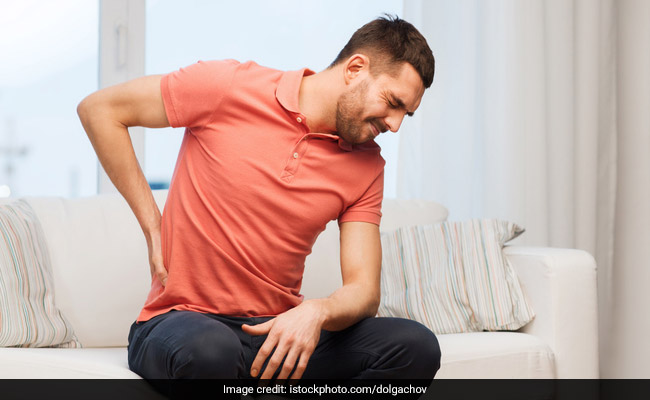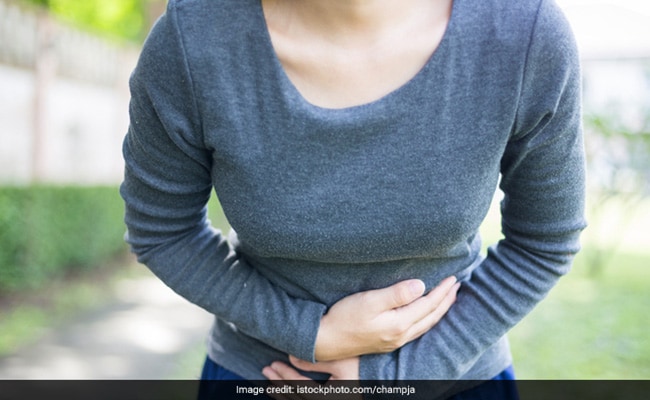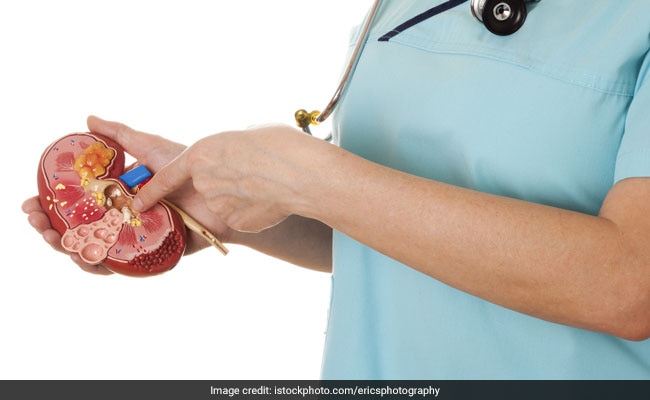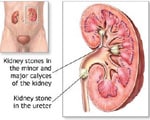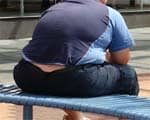Kidney stones
What is it?
The urinary system is made up of the kidneys, the ureters, the bladder, and the urethra. The kidneys are the organs that get rid of our body waste in the form of urine. There are two kidneys, one on either side of the spine under the lower ribs. The ureters carry the urine from the kidneys to the bladder. Urine is stored in the urinary bladder until urination occurs. It passes out of the body through a tube called the urethra.Stones can form anywhere in the urinary system. They develop when certain chemicals in the urine form crystals that stick together. The crystals grow into a stone, which can range in size from a grain of sand to a golf ball. Small stones (usually measuring <5mm) can pass through the urinary system without causing too much problems. However, larger stones can block the flow of urine or irritate the lining of the urinary tract. Most stones (70 to 80 percent) contain calcium oxalate crystals. A smaller number of stones are made of uric acid or cystine.
What are the causes?

Normally, urine contains chemicals, which prevent crystals from forming. Some people seem to be more prone to kidney stones than others. Factors such as recurrent urinary tract infections, drinking less fluids and blockage of the urinary tract lead to stone formation. Consuming too much oxalate or uric acid in the diet, excess vitamin C or D, certain medications and metabolic diseases may also lead to development of kidney stones.
What are the symptoms?
Kidney stones may remain without any symptoms for a long time. They may present with episodes of severe pain that usually starts suddenly in the lower back under the ribs or in the lower abdomen, and moves to the groin. The pain, which is often associated with vomiting, may last for minutes or hours, followed by periods of relief. Its a flank pain. The stones may cause blood to appear in the urine. If there is associated urinary tract infection, there may be burning during urination associated with an urge to urinate.
How is the diagnosis made?
A complete medical examination, X-rays and other tests are required to diagnose kidney stones. The doctor will conduct a complete physical examination and ask questions about past kidney illness, diet, use of medications and family background. A plain X-ray of the abdomen including the kidneys, ureters and bladder region (KUB view) shows most stones as they are opaque to X-rays. Some less common stones can be seen using dye injections (Intravenous Pyelography) or an ultrasound test. Blood tests like calcium, phosphorus and uric acid estimation and urine tests may be needed to find out if there is an underlying cause.
Also read: How can I get rid of kidney stones?
What is the treatment?
Most small stones (measuring <5 mm in size) usually pass through the body by themselves within hours or a few days. Drinking lots of fluids helps this process. Certain types of stones can be dissolved using medications. However, the most common stones (those containing calcium) cannot be dissolved. Stones that do not pass by themselves and cause obstruction of the urinary tract with resulting symptoms of pain/discomfort or/ and swelling of the kidney and the related urinary tract treatment, do require intervention. One method of treatment is a non-surgical technique called Extra-corporeal Shock Wave Lithotripsy (ESWL) that uses high-energy shock waves to break the stones into small fragments like sand. This stone dust then passes with urine during the next few weeks. This treatment can be successfully used in many cases where the stones are relatively small. The other method is by an operation that can be done either using the endoscope (ureteroscopy, nephroscopy) or by the standard open technique. More and more stones can now be treated without having to resort to an open operation.
What are the prevention?
Certain precautions can be taken to help prevent the formation of kidney stones. If there are no underlying health problems, then consuming at least 2 liters of fluid on a daily basis along with low salt diet helps to prevent recurrent stone formation. In case of calcium oxalate stones, very large amounts of dairy products or foods high in oxalates (like tea or chocolate) should not be consumed. Red meat must be restricted in cases of uric acid stones.
What are the complications?
Besides causing recurrent episodes of severe pain, kidney stones can cause bleeding along with urine. Infection may occur that may affect the kidneys. If the stones blocks the downward flow of urine, the kidney swells up with urine (hydronephrosis) that can over years adversely affect its function.
Kidney stones News More News
- Longest Ureteric Stone Removed From The Ureter Of A 35-Year-Old Woman
- If You Want To Avoid Kidney Stones, Drink Water
- Kidney stones linked to clogged arteries
- Hormone replacement and kidney stone risk
- Obesity multiplies kidney stone risk
- Obesity linked to kidney stones
- Amniotic fluid infection linked to preterm birth
- Metabolic syndrome and kidney stone risk
- Lithotripsy not linked to hypertension or diabetes
Kidney stones Health Photos More Photos
Kidney stones Videos More Videos
FAQ Related to Kidney stones
- Is it possible to conceive a baby after a sex change operation?
- Is it possible to conceive a baby after a sex change operation?
- Am I getting correct treatment for peripheral neuropathy?
- What are the latest kidney transplantation techniques?
- What is the right treatment for varicosities in the leg?
- Am I suffering from any disease?
................... Advertisement ...................
................... Advertisement ...................
................... Advertisement ...................
................... Advertisement ...................


